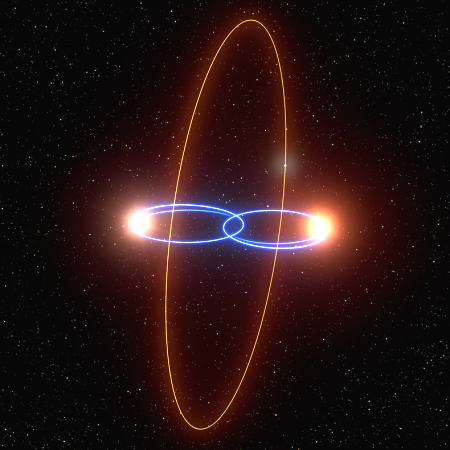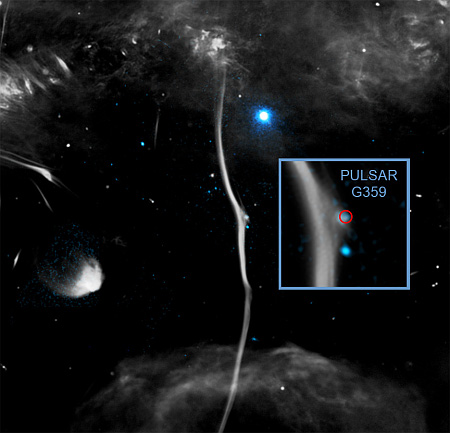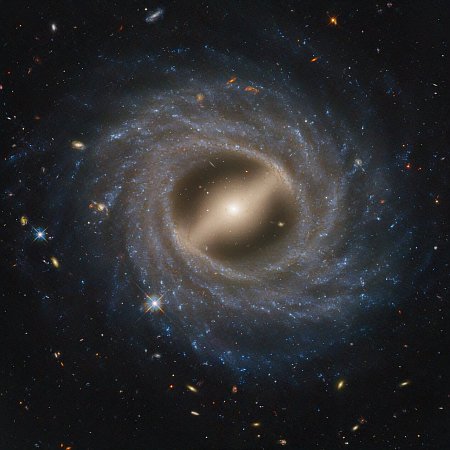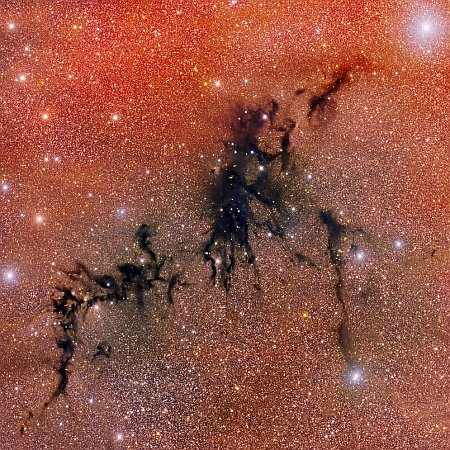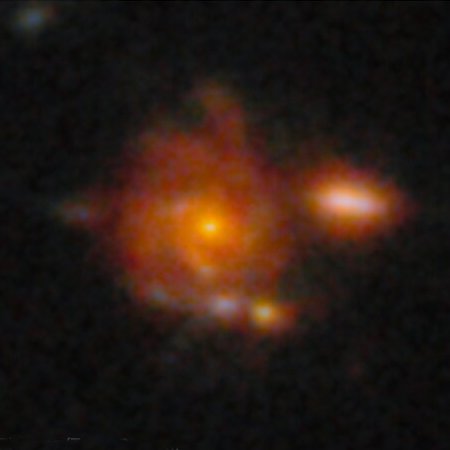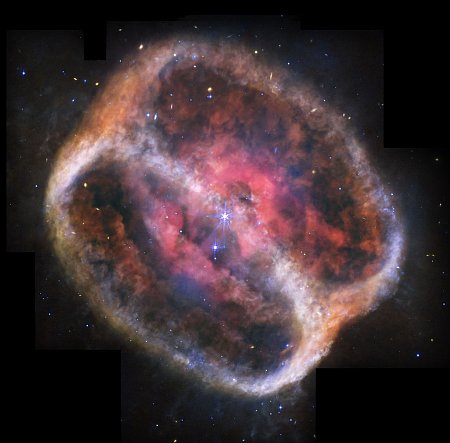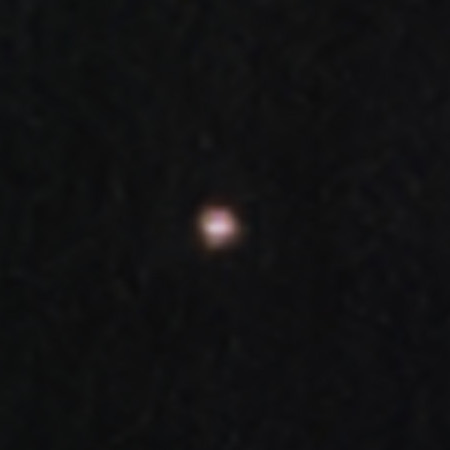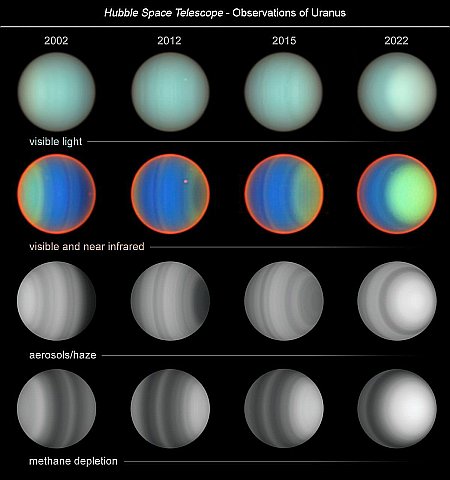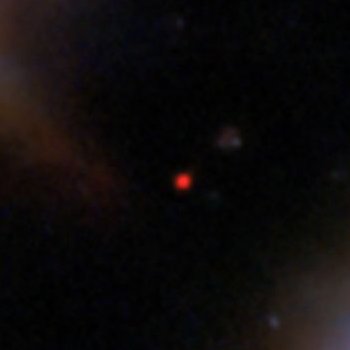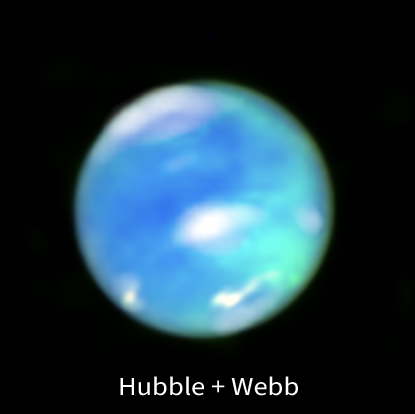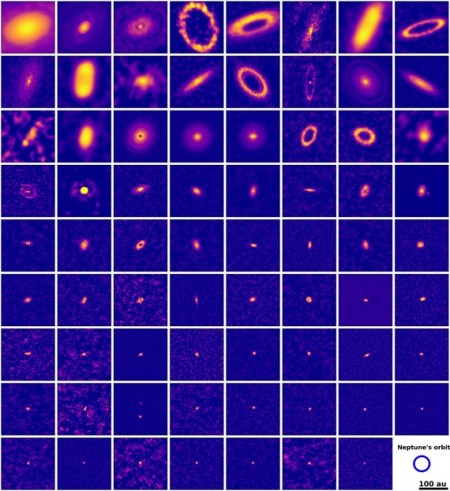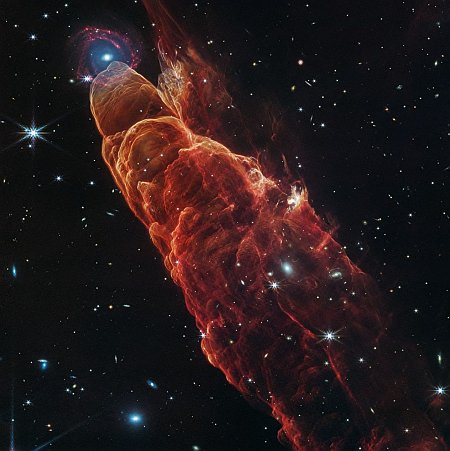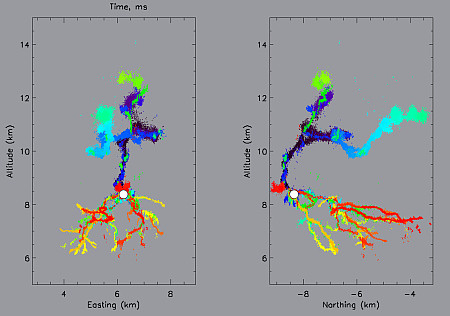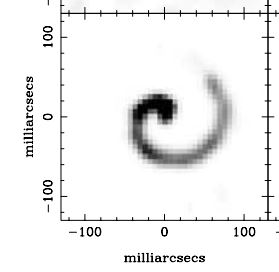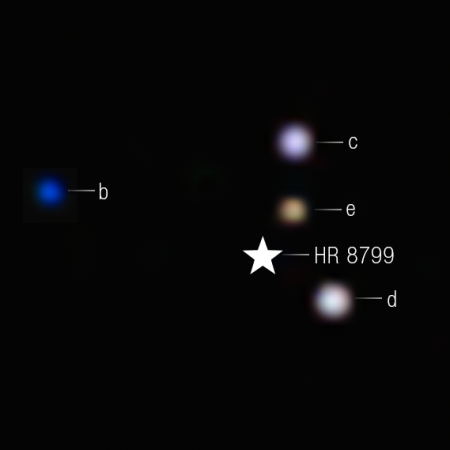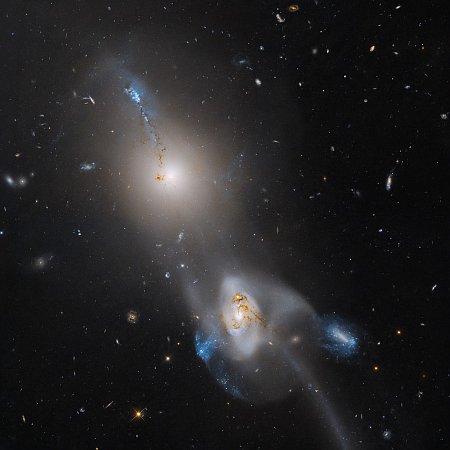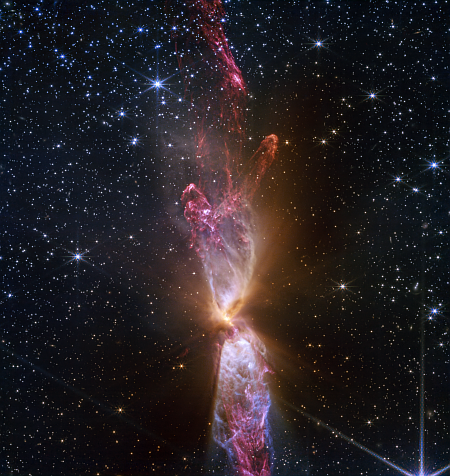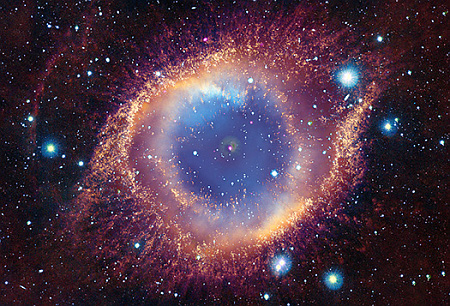Astronomers detect evidence of exoplanet in weird orbit
Though there is much uncertainty in their data, astronomers now believe they have discovered an exoplanet orbiting a binary system of two brown dwarfs, but doing so tilted 90 degrees to the ecliptic of the orbits of those brown dwarfs.
The graphic to the right illustrates the theorized system, with the orbits of the brown dwarfs indicated in blue and the exoplanet’s orbit in orange. While sixteen exoplanets have been found orbiting outside a binary pair of stars, this is the first doing so at such an inclination.
The detection has great uncertainty however.
The candidate planet cannot be detected the way most exoplanets – planets around other stars – are found today: the “transit” method, a kind of mini-eclipse, a tiny dip in starlight when the planet crosses the face of its star.
Instead they used the next most prolific method, “radial velocity” measurements. Orbiting planets cause their stars to rock back and forth ever so slightly, as the planets’ gravity pulls the stars one way and another; that pull causes subtle, but measurable, shifts in the star’s light spectrum. Add one more twist to the detection in this case: the push-me-pull-you effect of the planet on the two brown dwarfs’ orbit around each other. The path of the brown dwarf pair’s 21-day mutual orbit is being subtly altered in a way that can only be explained, the study’s authors conclude, by a polar-orbiting planet.
The radial velocity method however requires the scientists to make a number of assumptions, and provides limited information that can result in a misinterpretation of the data. It is for this reason this exoplanet is described as a “candidate planet.” Its theorized existence must be confirmed by other measurements before it is considered real.
I think this was posted as a quick link back in early May, when the scientists first announced their work, but can’t find it now.
Though there is much uncertainty in their data, astronomers now believe they have discovered an exoplanet orbiting a binary system of two brown dwarfs, but doing so tilted 90 degrees to the ecliptic of the orbits of those brown dwarfs.
The graphic to the right illustrates the theorized system, with the orbits of the brown dwarfs indicated in blue and the exoplanet’s orbit in orange. While sixteen exoplanets have been found orbiting outside a binary pair of stars, this is the first doing so at such an inclination.
The detection has great uncertainty however.
The candidate planet cannot be detected the way most exoplanets – planets around other stars – are found today: the “transit” method, a kind of mini-eclipse, a tiny dip in starlight when the planet crosses the face of its star.
Instead they used the next most prolific method, “radial velocity” measurements. Orbiting planets cause their stars to rock back and forth ever so slightly, as the planets’ gravity pulls the stars one way and another; that pull causes subtle, but measurable, shifts in the star’s light spectrum. Add one more twist to the detection in this case: the push-me-pull-you effect of the planet on the two brown dwarfs’ orbit around each other. The path of the brown dwarf pair’s 21-day mutual orbit is being subtly altered in a way that can only be explained, the study’s authors conclude, by a polar-orbiting planet.
The radial velocity method however requires the scientists to make a number of assumptions, and provides limited information that can result in a misinterpretation of the data. It is for this reason this exoplanet is described as a “candidate planet.” Its theorized existence must be confirmed by other measurements before it is considered real.
I think this was posted as a quick link back in early May, when the scientists first announced their work, but can’t find it now.

